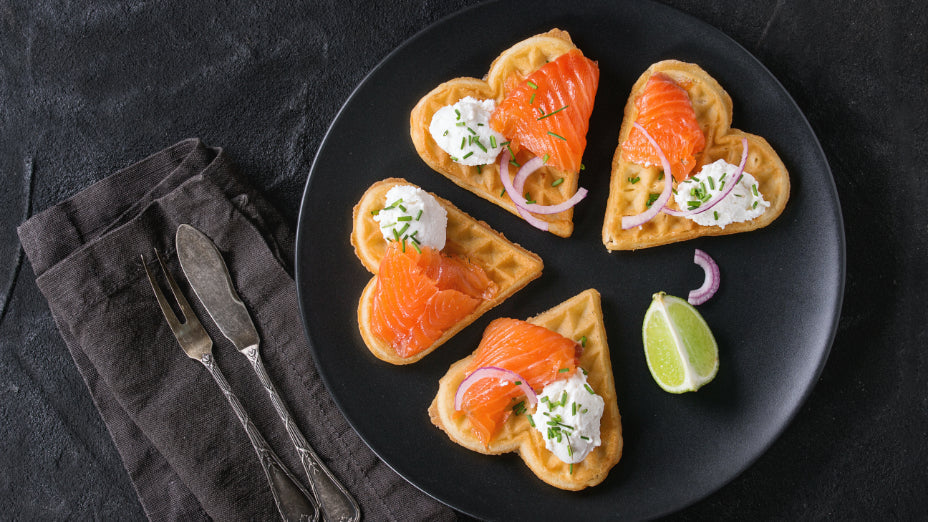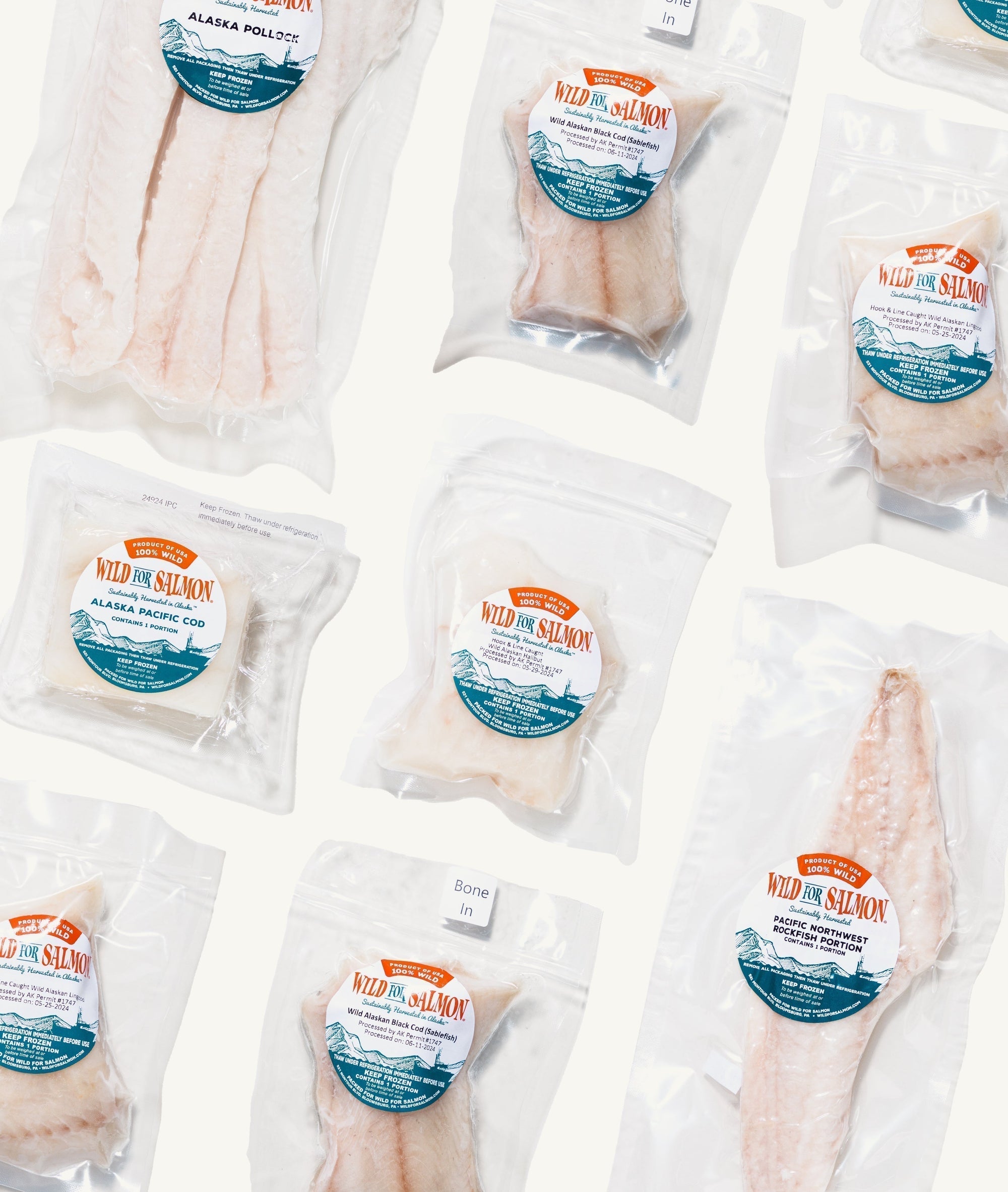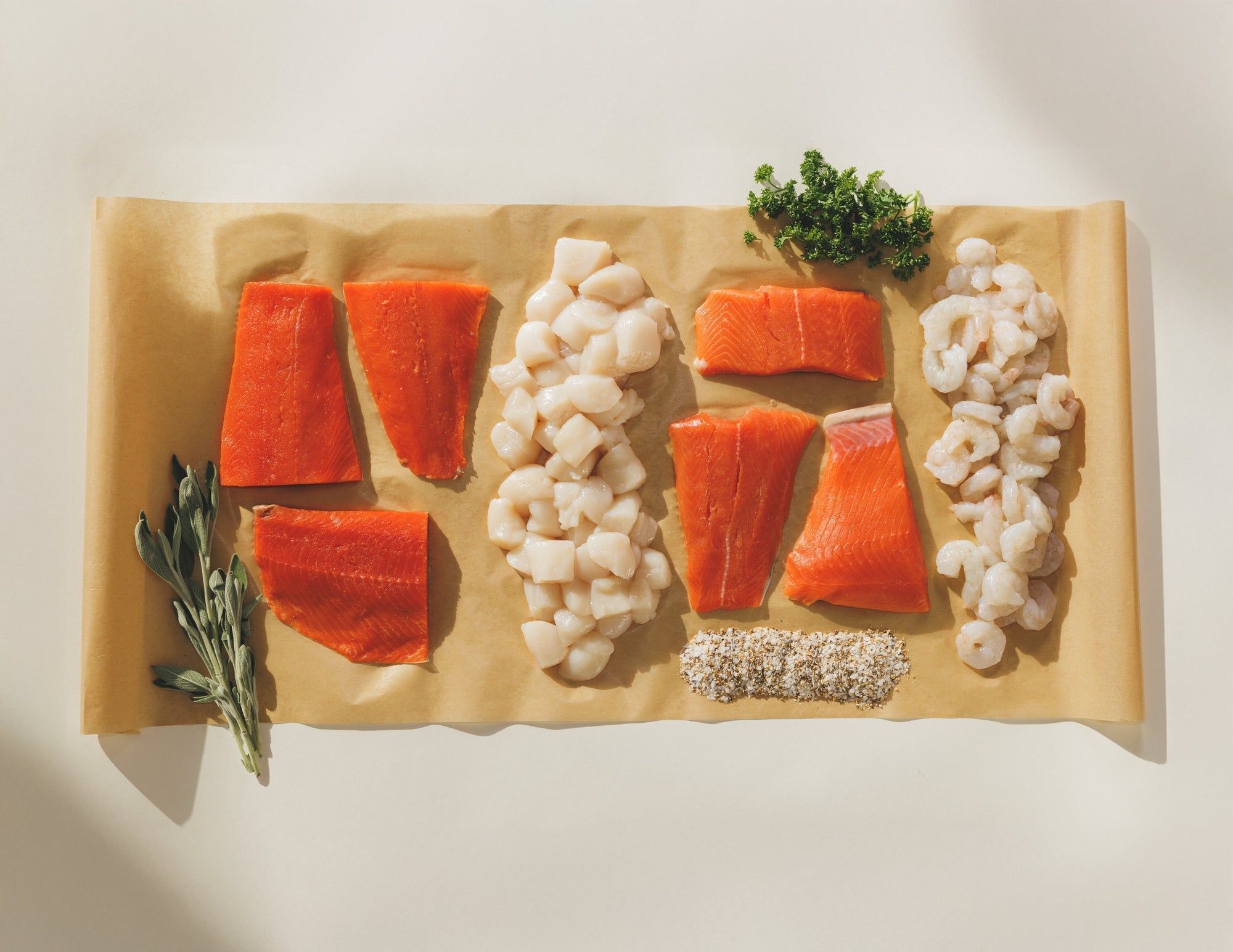Wild, Clean, and Made for the Heart
Every February, during American Heart Month, we’re reminded that our hearts deserve the same kind of care we give to the people and places we love. At Wild for Salmon, that means celebrating the foods that sustain us — the ones pulled fresh from cold Alaskan waters, rich in natural oils, and untouched by additives.
For 57 years, heart-health advocates have spread the word, yet heart disease remains the leading cause of death in the U.S. The good news? You can begin protecting your heart with something as simple as what’s on your plate.
Wild seafood is one of nature’s original health foods: pure protein, essential fats, and minerals caught in their most natural form. And wild salmon — particularly Alaska sockeye — is a true champion. Its generous stores of omega-3 fatty acids help reduce triglycerides (the “bad fats”), lower inflammation, and keep your heartbeat steady.
What Seafood Is Best for Heart Health 
Because omega-3 fats are stored in a fish’s tissue, fatty species are the most powerful protectors of the heart. Wild Alaska salmon, sustainably caught albacore tuna, mackerel, herring, and certain types of trout deliver the richest dose.
Wild fish also provide a story of integrity — raised by the ocean itself, free of dyes, antibiotics, and farm additives. Those pale white lines you see marbled through a salmon fillet? That’s where the omega-3s live — the good fat that keeps both fish and humans thriving.
Even our leaner catches, like Pacific Cod and wild shrimp, bring their own gifts — high protein, selenium, and trace minerals that nourish every cell.
Why Omega-3 Fatty Acids Matter
If cells are the building blocks of life, omega-3s are the mortar holding them together. These fatty acids shape the membranes that protect each cell, support brain and heart function, and help regulate inflammation.
In short, omega-3s:
-
Lower triglycerides and protect against plaque buildup
-
Encourage a steady heartbeat and reduce the risk of arrhythmias
-
Keep arteries clear and flexible, improving blood flow
-
Soothe inflammation throughout the body
Research continues to show that eating omega-3-rich foods — rather than relying on supplements — is the most effective way to absorb these benefits.
How Often Should You Eat Seafood for Heart Health 
The American Heart Association recommends at least two servings of fatty fish per week — about 3.5 ounces cooked (roughly ¾ cup of flaked fish).
-
Our wild sockeye salmon portions average 5–7 ounces — the perfect restaurant-style serving.
-
Our canned wild salmon comes in 6 oz (boneless) and 7.5 oz (bone-in) cans — ideal for two quick meals.
-
Our wild Pacific albacore tuna portions offer ~2 grams of omega-3s in every 3.5 oz serving.
💡 Tip: Don’t toss the bones! In bone-in canned salmon, the pressure cooking softens them completely — adding calcium and flavor to your recipes.
You can even craft a nourishing fish stock from salmon heads or halibut bones, much like a mineral-rich bone broth.
Recipe #1: Salmon Avocado Salad with Canned Salmon
A recipe from our friend Wellness with Edie, a certified Integrative Nutrition Health Coach who knows how to make eating well feel effortless.
Ingredients
-
2 cans of Wild for Salmon Wild-Caught Alaska Salmon (bone-in or boneless)
-
1 ripe avocado
-
1 Tbsp Dijon mustard
-
2 tsp minced garlic
-
¼ cup capers
-
⅓ cup fresh dill (chopped)
-
Juice of ½ lemon
-
Black pepper and red chili flakes (optional)
Directions
-
In a large bowl, mash together the salmon and avocado.
-
Add Dijon, garlic, and lemon juice; mix well.
-
Gently fold in capers, dill, and spices to taste.
-
Chill for 10 minutes in the freezer (or 30 in the fridge) before serving.
Creamy, bright, and full of good fats — this salad is perfect for a quick lunch or picnic.
Recipe #2: Grilled Albacore Tuna with Orange Marinade
A light, zesty recipe that honors the flavor of Pacific tuna. Let the citrus soak in overnight for the best results.
Ingredients
-
1.5 lb Wild-Caught Albacore Tuna Loins or Medallions
-
1 cup orange juice
-
¾ cup brown sugar
-
¼ cup soy sauce (or liquid aminos)
-
¾ cup neutral cooking oil
-
1 Tbsp orange zest
-
1 small green onion, chopped
Directions
-
Whisk together marinade ingredients; add tuna and refrigerate for at least 6 hours (or overnight).
-
Heat grill to high; sear tuna 2–3 minutes per side, leaving the center pink.
-
Let rest a minute before slicing.
Serve with grilled citrus or a green salad — and try this same marinade with wild salmon too!
Why Providing Heart-Healthy Fish Matters to Us
We’re not doctors — we’re fishermen, families, and people who care deeply about what we eat. For us, heart health is about more than nutrition charts — it’s about feeding our families food that feels alive, food we trust.
Every fillet we sell, from the F/V Ava Jane in Bristol Bay to your kitchen, is wild-caught, traceable, and full of life. We believe healthy food should be accessible, sustainable, and shared — even with your pets!
You can learn more about the benefits of wild seafood on our Health Benefits page.
The Wild for Salmon Promise
We fish with care.
We freeze for freshness.
We feed families — ours and yours.
Protect your heart. Honor the ocean.
Eat wild. Eat well.



